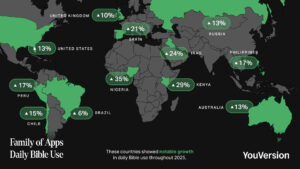How To Grow Your Small Business

In today’s dynamic business landscape, small enterprises play a pivotal role in driving innovation and contributing to economic growth.
However, navigating the competitive realm of entrepreneurship can be a challenging endeavor, requiring a strategic approach to achieve sustainable success. This is where understanding the art of business growth comes into play. In this comprehensive guide, we’ll delve into proven strategies and actionable insights that can empower small business owners like you to propel your venture forward, unlock its true potential, and achieve remarkable growth milestones.
As the heartbeat of economies worldwide, small businesses often face a unique set of hurdles ranging from limited resources to fierce competition. But amidst these challenges lies a landscape rich with opportunities waiting to be seized. The journey to expansion and prosperity starts with a clear vision and a well-crafted plan. By adopting effective growth strategies, small business owners can not only overcome obstacles but also position themselves to thrive in the market. Whether you’re a startup seeking to establish your presence or an established small business aiming to reach new heights, this guide will equip you with the knowledge and tools needed to chart a course towards sustainable growth.
Define Your Business Growth Goals:
Setting clear and well-defined growth goals is the compass that guides your small business toward success. These goals serve as the foundation of your strategic decisions, giving your efforts purpose and direction. When defining your goals, specificity is key. Rather than aiming for “increased revenue,” consider setting a goal to achieve a 20% revenue growth within the next year.
To ensure your goals are achievable, they should be realistic and aligned with your current resources and capabilities. Whether it’s expanding your customer base, launching a new product line, or entering a new market, each goal should be carefully crafted to match your business’s unique strengths and opportunities. These well-defined growth goals not only keep you focused but also provide a clear yardstick to measure your progress, allowing you to make necessary adjustments and celebrate milestones along the way.
Know Your Target Audience:
Understanding your target audience is the cornerstone of effective business growth. By gaining insights into the demographics, preferences, and behaviors of your potential customers, you can tailor your strategies to resonate with their needs. Start by creating detailed buyer personas that encapsulate the characteristics of your ideal customers.
Demographic data such as age, gender, location, and income level provides a foundational understanding. Dig deeper with psychographic information, delving into their values, interests, challenges, and aspirations. This comprehensive understanding allows you to craft marketing messages and offerings that genuinely connect with your audience, establishing trust and fostering brand loyalty. Regularly revisiting and refining your audience profiles ensures that your strategies remain relevant and targeted, helping your small business thrive in a competitive market.
Develop a Strong Online Presence:
In the digital age, a robust online presence is non-negotiable for small business growth. A professional website serves as your virtual storefront, offering potential customers a glimpse into your offerings and values. Opt for a responsive design that adapts seamlessly across devices, ensuring a smooth user experience.
Beyond a static website, a dynamic blog is a potent tool for engaging your audience. By creating valuable, relevant content, you not only establish your expertise but also attract organic traffic through search engines. Speaking of which, search engine optimization (SEO) techniques can’t be overlooked. Incorporate relevant keywords naturally into your content, meta descriptions, and headings to enhance your visibility on search engine results pages. A strong online presence not only bolsters your credibility but also provides a platform to interact with customers, showcasing your brand’s authenticity and fostering lasting connections.
Harness the Power of Social Media:
In today’s interconnected world, leveraging social media is a potent strategy for small business growth. Platforms like Facebook, Instagram, and Twitter offer direct access to a vast audience. Utilize these platforms to showcase your products or services, share engaging content, and interact with your audience. To make your posts visually appealing, consider using an online video editor to create eye-catching videos that convey your brand’s message effectively.
Hashtags play a crucial role in expanding your reach. Incorporate relevant keywords and phrases related to your business in your posts to increase discoverability. Regular posting and active engagement are key to maintaining a strong social media presence. Respond promptly to comments, messages, and inquiries to build a loyal online community. By consistently delivering value and using visuals created with a free online video editor, you can harness social media’s power to establish brand authority, foster customer loyalty, and drive traffic to your website, ultimately propelling your small business towards growth.
Utilize Email Marketing:
Email marketing remains a powerful tool for nurturing customer relationships and driving small business growth. Build an email list by integrating sign-up forms on your website, capturing interested visitors. Craft engaging and personalized content that provides value to your subscribers. Whether it’s informative newsletters, exclusive offers, or updates about your products or services, emails allow you to stay connected.
Segment your email list based on customer preferences and behaviors to deliver targeted messages. Avoid spammy tactics and focus on delivering relevant content that resonates with each segment. Use clear call-to-action buttons to direct recipients to your website or specific landing pages. By leveraging email marketing effectively, you can establish a direct line of communication with your audience, foster brand loyalty, and drive conversions that contribute to your small business’s sustained growth.
Offer Exceptional Customer Service:
Exceptional customer service is the cornerstone of small business growth. Every interaction with a customer is an opportunity to create a positive impression and build lasting relationships. Promptly address inquiries, concerns, and feedback to show that their opinions matter. Personalization goes a long way; use their names and recall previous interactions to make them feel valued.
Going above and beyond expectations sets your business apart. Offer solutions that address their unique needs and provide value beyond your products or services. With social media and online reviews, word of mouth can spread rapidly. By consistently delivering exceptional customer service, you not only retain existing customers but also attract new ones through positive recommendations. In the competitive business landscape, fostering a reputation for outstanding service is a direct path to sustainable growth and success.
Collaborate and Network:
Collaboration and networking can propel your small business to new heights. Partnering with complementary businesses can lead to mutually beneficial opportunities. Attend industry events, trade shows, and join online forums to connect with potential partners and customers. These interactions provide insights, knowledge sharing, and even joint ventures that can expand your reach and customer base.
Networking isn’t just about selling; it’s about building relationships. Listen and engage genuinely to establish trust. Collaborative efforts can open doors to new markets, resources, and expertise that you might not have access to otherwise. By fostering a network of partners and supporters, your small business gains access to a wider audience, paving the way for innovation and sustainable growth in the ever-evolving business landscape.
Expand Your Product/Service Line:
Diversifying your product or service offerings is a strategic move to fuel small business growth. By expanding your range, you tap into the evolving needs of your existing customer base and attract new ones. Before launching new offerings, conduct thorough market research to identify gaps and opportunities that align with your brand identity.
Consider the concept of a minimum viable product (MVP) when introducing new offerings. Start with a basic version of the product or service and gather customer feedback for improvements. This iterative approach minimizes risks and ensures that your new offerings meet customer expectations. As your product line expands, maintain a coherent brand image across all offerings, reinforcing trust and customer loyalty. By consistently innovating and adapting, your small business can maintain a competitive edge, capture a larger market share, and achieve sustainable growth.
Monitor and Analyze Your Metrics:
In the pursuit of small business growth, monitoring and analyzing key performance metrics is imperative. Utilize tools like Google Analytics to track website traffic, user behavior, and conversion rates. These insights unveil what’s working and what needs refinement, allowing data-driven decisions. Regularly review metrics like customer acquisition cost (CAC) and customer lifetime value (CLTV) to gauge your marketing effectiveness.
Metrics don’t just provide hindsight; they guide your strategies forward. Identify trends and patterns to adapt quickly to changing market dynamics. A/B testing can refine your tactics by comparing different approaches. By continuously refining based on data, your small business optimizes its processes, reduces wastage, and unlocks growth opportunities. Remember, what’s measurable is manageable, and a metrics-focused approach can lead your business to sustained success.
Secure Funding Wisely:
Strategic funding is a pivotal step in small business growth. Evaluate various funding options, from traditional loans to angel investors or venture capital. Each avenue has pros and cons, so choose what aligns with your business’s goals and financial situation. Prepare a comprehensive business plan that outlines your growth strategy, demonstrating your potential to investors or lenders.
Assess the risks and benefits of each funding source carefully. While external funding can provide the resources needed for expansion, it also involves commitments and potential equity dilution. Remember that responsible financial management is essential. Whatever path you choose, make sure your funding aligns with your growth trajectory and safeguards the long-term stability of your small business.
Conclusion
In the dynamic realm of small business, growth isn’t just an aspiration; it’s a strategic imperative. Armed with a clear roadmap, from defining growth goals to securing funding wisely, your journey towards success gains clarity and purpose. Each strategy, from harnessing the power of social media to expanding your product line, plays a vital role in carving your niche in a competitive landscape.
Remember, growth isn’t a one-size-fits-all formula. It’s about adapting, learning, and making data-driven decisions. By embracing innovation, fostering strong relationships with customers, and capitalizing on collaborative opportunities, your small business can rise above challenges and thrive. So, embark on this journey with confidence, armed with the insights and strategies that ensure your business’s sustainable growth and prosperity.








